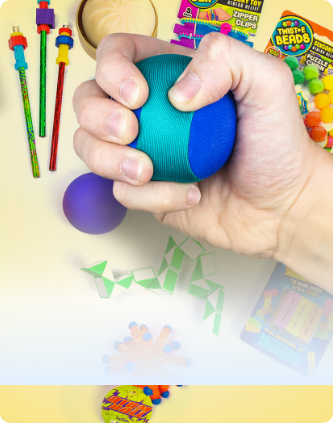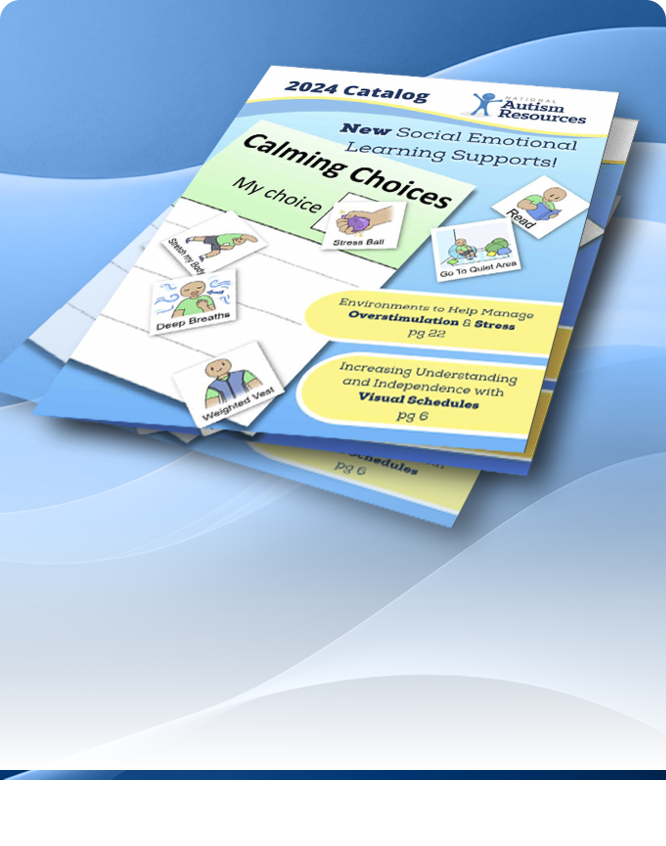How Choices Can Increase Compliance
Posted by Amy Nielsen on Aug 20th 2019
I was so proud of my husband the other night. As I was finishing up the dinner dishes, I overheard him tell our four-year-old son it was time for bed. Immediately the protests began, “No, Daddy. No, Daddy.” My husband countered, “Do you want to sleep with Buzz or Woody?” Next, I heard my son enthusiastically shout, “Buzz!” Dad for the win!
My son has ADHD and Autism Spectrum Disorder. Compliance can be a real challenge. Often this is due to his tendency to intently focus on what he is doing to the point where any disruption, such as the request to transition, can lead to noncompliance, aggressive behavior and meltdowns. For example, if he is engaged in building a train track then leaving that activity to go the table for dinner can become a major hurdle. However, we discovered that simply by giving him choices, we have increased compliance which in turn has decreased aggressive behavior and meltdowns.
If you are dealing with non-compliance, these suggestions may help.
- Give few options – I was at a friends’ house about a year ago and she had just finished bathing her then 3-year-old son. She bundled him in a towel and brought him to his room to pick out his pajamas. She opened the bottom dresser drawer revealing at least 10 pair. While I totally applaud giving him the choice, 10 options are way too many, especially for children on the autism spectrum. I always start with just two, slowly over time increasing the options to three or four. When using choices to increase compliance the child needs to be able to make the decision quickly. Your goal is either deescalating current noncompliance, as in the example with my husband, or preventing it from happening. If too many options are presented that can be overwhelming to the child. Think about how you feel when you have too many options. It can cause stress and anxiety. So, remember to start with just a few.
- Offer choices that you approve of and are realistic – I hear parents all the time give choices that fit neither of fore mentioned criteria. “Do you want to pick up your toys or do you want me to throw them all away?” In addition to not being realistic (you aren’t really going to throw all the toys away) avoiding punishment isn’t an appropriate choice. The statement above won’t increase compliance, more than likely it will have the opposite effect. What if they choose to throw them away to avoid cleaning? Your goal was to get them to clean. Now you’ve given them an option not to. Instead say something like, “Do you want Mommy to help you clean up your toys or do you want Daddy to help?” Now the child has two options that you approve of and are realistic.
- Don’t give choices for everything – Using choices can be a great intervention, however, don’t overuse it. There are some things that need to be non-negotiable. For example, things related to safety. My son doesn’t have the option to not wear a tether when we are out in public. He is an eloper and it isn’t safe. The choice he gets is either you ride in your stroller or you wear the tether. He sometimes tries to negotiate holding my hand instead of being tethered to me, but we aren’t there yet. Also, having to make too many decisions can be overwhelming. Identify the areas where you are noticing the highest non-compliance and figure out how to incorporate choices in those areas only.
- Choices need to be immediately reinforced – My son cannot be offered a choice for some future event or item if we are attempting to intervene in the moment. If it is naptime and he is refusing an effeective choice can’t be “After your nap do you want to go to the park or go swimming.” The choice needs to be something like, “Do you want to read Dr. Suess’ ABC’s or The Little Blue Truck before your nap?” By offering a choice from something that is not immediate you are setting the child up for failure. They are going to want to go swimming now, not two hours from now. My son just recently celebrated his fourth birthday. I wrapped his gifts and hid them until the moment he could open otherwise the entire party would have been him wanting to open his gifts and not understanding why he couldn’t and more than likely would have led to a meltdown.
- Do not alter the choices – “Do you want mac and cheese or chicken nuggets for dinner?” Don’t allow the child to add a third option. These are the two choices, end of story. You can’t give that power away. Initially when you start using choices there is a good chance that noncompliance will increase. That is pretty common when you begin a new behavior intervention. However, over time your child will learn that there are no other options besides what you give. So the child will be motivated to make a choice, be sure the options you offer are highly preferred. Now isn’t the time to offer a food or activity as a choice the child typically refuses. My son suffers from severe restrictive eating. We are often trying to introduce new and non-preferred foods. However, when I am using choices to encourage compliance, as in the train example, I’ll only offer two of his highly preferred foods to help transition him from the train to the table.
- Praise when a choice is made that leads to compliance– The most important aspect of any behavior modification technique is to praise the child when it works! My son was often non-complaint with teeth brushing. Because he is highly motivated by crayons, I found some toothbrushes that were crayon themed. I bought a pack of four different colors. He has two in each bathroom he brushes his teeth in and he gets to choose which color he uses. When he chooses a color and brushes his teeth we make a big deal out of it. Whereas before he often refused to brush his teeth, now he feels like it his choice! He feels empowered. That is what this is really all about. All day our kids are told what to do and often that means stopping what they want to do to do what you want them to do. By giving them choices, they begin to feel like they have some power in their own life. Isn’t that what we all want!
Children learn how to make good decisions, by making decisions. Not by following directions. – Alphie Kohn
Check out more of Amy's work bigabilities.com/







